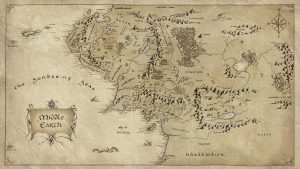
 Love, Loneliness and the Strictures of Society.
Love, Loneliness and the Strictures of Society.
Imagine living in a world where life is governed by intricate rituals; a world “balanced so precariously that its harmony [can] be shattered by a whisper” (Wharton); a world ruled by self-declared experts on form, propriety and family history – read: scandal –; where everything is labeled and yet, people are not; where in order not to disturb society’s smooth surface nothing is ever expressed or even thought of directly, and where communication occurs almost exclusively by way of symbols, which are unknown to the outsider and, like any secret code, by their very encryption guarantee his or her permanent exclusion.
Such, in faithful imitation of Victorian England, was the society of late 19th century upper class New York. Into this society returns, after having grown up and lived all her adult life in Europe, American-born Countess Ellen Olenska (Michelle Pfeiffer), after leaving a cruel and uncaring husband. She already causes scandal by the mere manner of her return; but not knowing the secret rituals of the society she has entered, she quickly brings herself further into disrepute by receiving an unmarried man, by being seen in the company of a man only tolerated by virtue of his financial success and his marriage to the daughter of one of this society’s most respected families, by arriving late to a dinner in which she has expressly been included to rectify a prior general snub, by leaving a drawing room conversation to instead join a gentleman sitting by himself – and worst of all, by openly contemplating divorce, which will most certainly open up a whole Pandora’s box of “oddities” and “unpleasantness”: the strongest terms ever used to express moral disapproval in this particular social context. Soon Ellen, who hasn’t seen such façades even in her husband’s household, finds herself isolated and, wondering whether noone is ever interested in the truth, complains bitterly that “[t]he real loneliness here is living among all these kind people who only ask you to pretend.”
Ellen finds a kindred soul in attorney Newland Archer (Daniel Day-Lewis), her cousin May Welland’s (Winona Ryder’s) fiancé, who secretly toys with a more liberal stance, while outwardly endorsing the value system of the society he lives in. Newland and Ellen fall in love – although not before he has advised her, on his employer’s and May and Ellen’s family’s mandate, not to pursue her plans of divorce. As a result, Ellen becomes unreachable to him, and he flees into accelerating his wedding plans with May, who before he met Ellen in his eyes stood for everything that was good and noble about their society, whereas now he begins to see her as a shell whose interior he is reluctant to explore for fear of finding merely a kind of serene emptiness there; a woman whose seemingly dull, passive innocence grinds down every bit of roughness he wants to maintain about himself and who, as he realizes even before marrying her, will likely bury him alive under his own future. Then his passion for Ellen is rekindled by a meeting a year and a half after his wedding, and an emotional conflict they could hardly bear when he was not yet married escalates even further. And only when it is too late for all three of them he finds out that his wife had far more insight (and almost ruthless cleverness) than he had ever credited her with.
Winner of the 1921 Pulitzer Prize and the first work of fiction written by a woman to be awarded that distinction, “The Age of Innocence” is one of Edith Wharton‘s most enduringly popular novels; the crown jewel among her subtly satirical descriptions of New York upper class society. Martin Scorsese reportedly lobbied hard to bring the novel to the screen under his direction; and what at first looks like an odd match for the director of “Goodfellas,” “Mean Streets” and “Taxi Driver” turns out to be a masterpiece of understanding of the intricate workings of this world; a visual feast splendidly realized by cinematographer Michael Ballhaus and production and costume designers Dante Ferretti and (Oscar-winning) Gabriella Pescucci; reminiscent of a period tableau, where a dinner table’s immaculate symmetry expresses society’s outwardly perfect façade, a person’s character is mirrored in the paintings they own, their house’s interior decoration, the way they dress and the flowers they receive, and where, like in the novel, the protagonists’ relationships are choreographed to coincide with the pivotal moments of the stage performances they attend, such as Charles Gounod’s opera “Faust” and Dion Boucicault’s play “The Shaughraun;” a rare feat of psychological insight into the novel’s every character, from the three flawlessly portrayed principals (of whom only Winona Ryder won a Golden Globe and a National Board of Review Award, although all three of them would have been equally deserving) to the just as critical supporting roles, played by an all-star cast including Miriam Margolyes, who earned a BAFTA Award for her portrayal of unconventional society matriarch (nay, dowager-empress) Mrs. Manson Mingott, Richard E. Grant (“form” expert Larry Lefferts), Alec McCowen (scandalmonger Sillerton Jackson), Stuart Wilson and Mary Beth Hurt (disreputable financier Julius Beaufort and his wife Regina), Geraldine Chaplin (May’s mother), Siân Phillips (Newland’s mother), Michael Gough and Alexis Smith (society doyens Henry and Louisa van der Luyden), Robert Sean Leonard (Newland and May’s son Ted), Jonathan Pryce (Olenski’s secretary Riviere) and Norman Lloyd (Newland’s senior law partner Letterblair).
Scorsese’s movie is sometimes criticized for its use of a narrator (Joanne Woodward). But Woodward’s voiceovers not only capture Wharton’s subtly ironic tone to absolute perfection; her narration also provides a gentle frame to a story which could easily become fractured otherwise; or in the alternative, would have to include countless scenes merely to establish a certain atmosphere and social context without significantly advancing the storyline. On the whole, this is an all-around exceptional production, remarkably faithful to the literary original, and absolutely on par with the best of Scorsese’s other works.
Production Credits /
Cast and Crew
Production Credits
- Studio: Columbia Pictures (1993)
- Director: Martin Scorsese
- Producers: Barbara De Fina / Bruce S. Pustin / Joseph Reidy
- Screenplay: Jay Cocks & Martin Scorsese
- Based on a novel by: Edith Wharton
- Music: Elmer Bernstein
- Cinematography / Director of Photography: Michael Ballhaus
- Production Design: Dante Ferretti
- Costume Design: Gabriella Pescucci
Cast
- Daniel Day-Lewis: Newland Archer
- Michelle Pfeiffer: Ellen Olenska
- Winona Ryder: May Welland
- Richard E. Grant: Larry Lefferts
- Alec McCowen: Sillerton Jackson
- Geraldine Chaplin: Mrs. Welland
- Mary Beth Hurt: Regina Beaufort
- Stuart Wilson: Julius Beaufort
- Miriam Margolyes: Mrs. Mingott
- Siân Phillips: Mrs. Archer
- Michael Gough: Henry van der Luyden
- Alexis Smith: Louisa van der Luyden
- Norman Lloyd: Mr. Letterblair
- Jonathan Pryce: Rivière
- Robert Sean Leonard: Ted Archer
- Joanne Woodward: Narrator (voice)
Major Awards and Honors
Academy Awards (1994)
- Best Costume Design: Gabriella Pescucci
Golden Globes (1994)
- Best Supporting Actress – Motion Picture: Winona Ryder
National Board of Review Awards (1993)
- Best Director: Martin Scorsese
- Best Supporting Actress: Winona Ryder
BAFTA Awards (1994)
- Best Actress in a Supporting Role: Miriam Margolyes
Venice Film Festival (1993)
- Elvira Notari Prize
Links
- The Age of Innocence at the Internet Movie Database
- The Age of Innocence at AllMovie.com
- The Edith Wharton Society
- The Yale University Beinecke Library Edith Wharton Collection
- The Mount: Edith Whaton’s Home (Lenox, MA)
- Edith Wharton’s biography at the Kirjasto Authors’ Calendar
- Themis-Athena’s Edith Wharton author page

The Age of Innocence is indeed, beautiful & heartbreaking, it has such a haunting quality to it. Daniel Day-Lewis and Michelle Pfeiffer are as emotionally compelling any couple I can remember.
True — an absolutely breathtaking movie (breathtaking also in the sense of the stifling atmosphere, incidentally)!